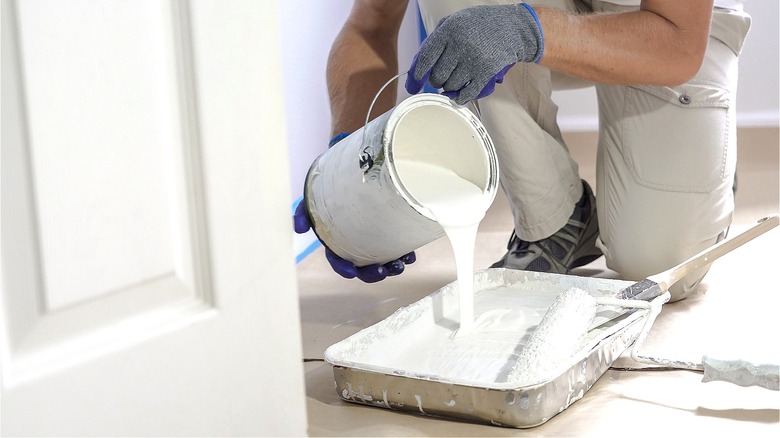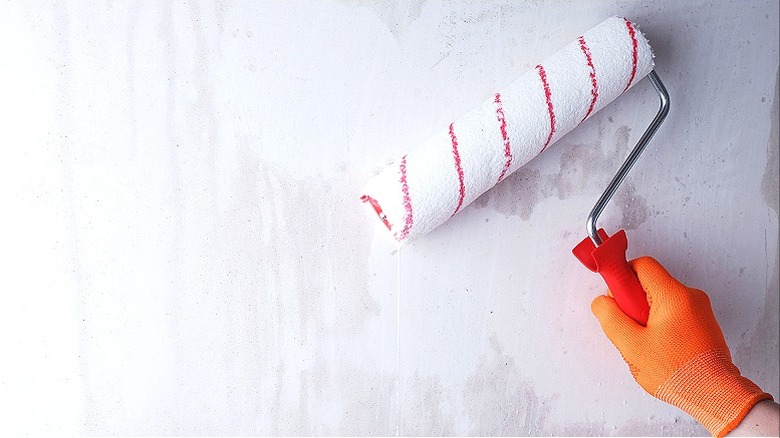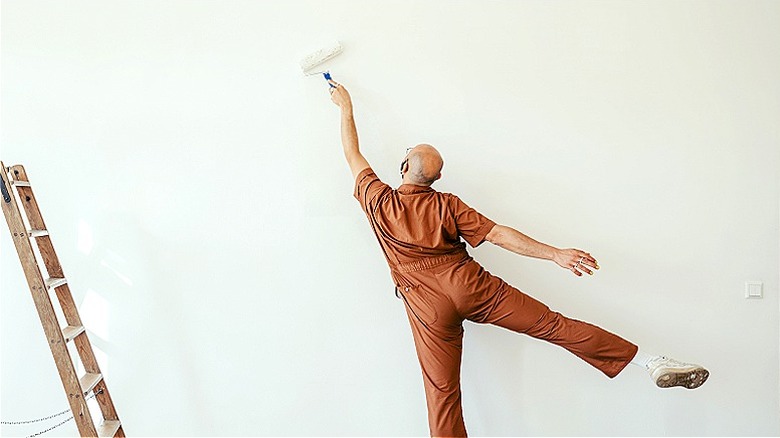Think Twice Before Using White Paint In Place Of A Primer
While it might seem like a simple task initially, painting your walls can be quite the challenge. Choosing a color and testing it for changes in lighting, taping the room, and making sure you get even coverage and color across the board can take days, if not weeks, of consideration. After factoring in all of these steps, you might be tempted to take a bit of a shortcut to save some money and decrease the amount of time you'll be waiting until you can enjoy your efforts. Unfortunately, swapping out primer for white paint isn't a shortcut that's likely to yield positive results.
Primer might look just like white paint to the inexperienced eye, and a coat of a light color can certainly still make covering a dark color a bit easier, but these two wall treatments actually have a completely different composition. Because of this, primer is a crucial step, and skipping out on it might mean you'll be left with a project you're stuck redoing when you're left with a less-than-stellar final product.
Why can't you sub white paint for primer?
Before you begin considering different swaps you can make, you have to first understand the purpose of priming your walls before you paint. The name is fairly self-explanatory — primer helps to prepare or prime your walls before you go in with your actual color — but the reason you need a preparatory layer is a bit more complex. Most of the time, when you're doing interior painting, you're painting over drywall. Because drywall is so porous, it absorbs a percentage of the paint you apply. Primer, however, helps to create a barrier that limits that absorption, meaning you'll get full opacity of color with fewer coats. Additionally, it helps to extend the life of your paint and increase its adhesion. If you paint without using a primer first, you might be stuck facing chips and damage after a year or two.
To properly seal the wall, primer has a higher amount of resin in the mix than standard paint does. This means more sealing power, less absorption, and less pigment than a typical white paint. While they might look similar, they can't be swapped for one another for this reason.
When you can skip primer entirely
While primer is an important step for many projects, there are also some paint jobs where you don't need to apply a coat of primer at all. Well-maintained walls that have been painted and primed in the past won't absorb your first few layers of paint because they're already coated, and many paint brands sell paints that already include primer so you don't have to add in any additional steps.
In these situations, a white paint can be used to help reduce the depth of a dark color, but you can also just use several coats of your final color until you get the coverage you're looking for to avoid having to purchase additional products. Make sure to check the can or read the manufacturer's instructions to guarantee you're left with the best results possible. If you're unsure, a coat of primer is usually your best bet. It might add in a bit of extra wait time until you get to see the final result, but it will be worth it when you're able to enjoy the fruits of your labor several years down the line.


